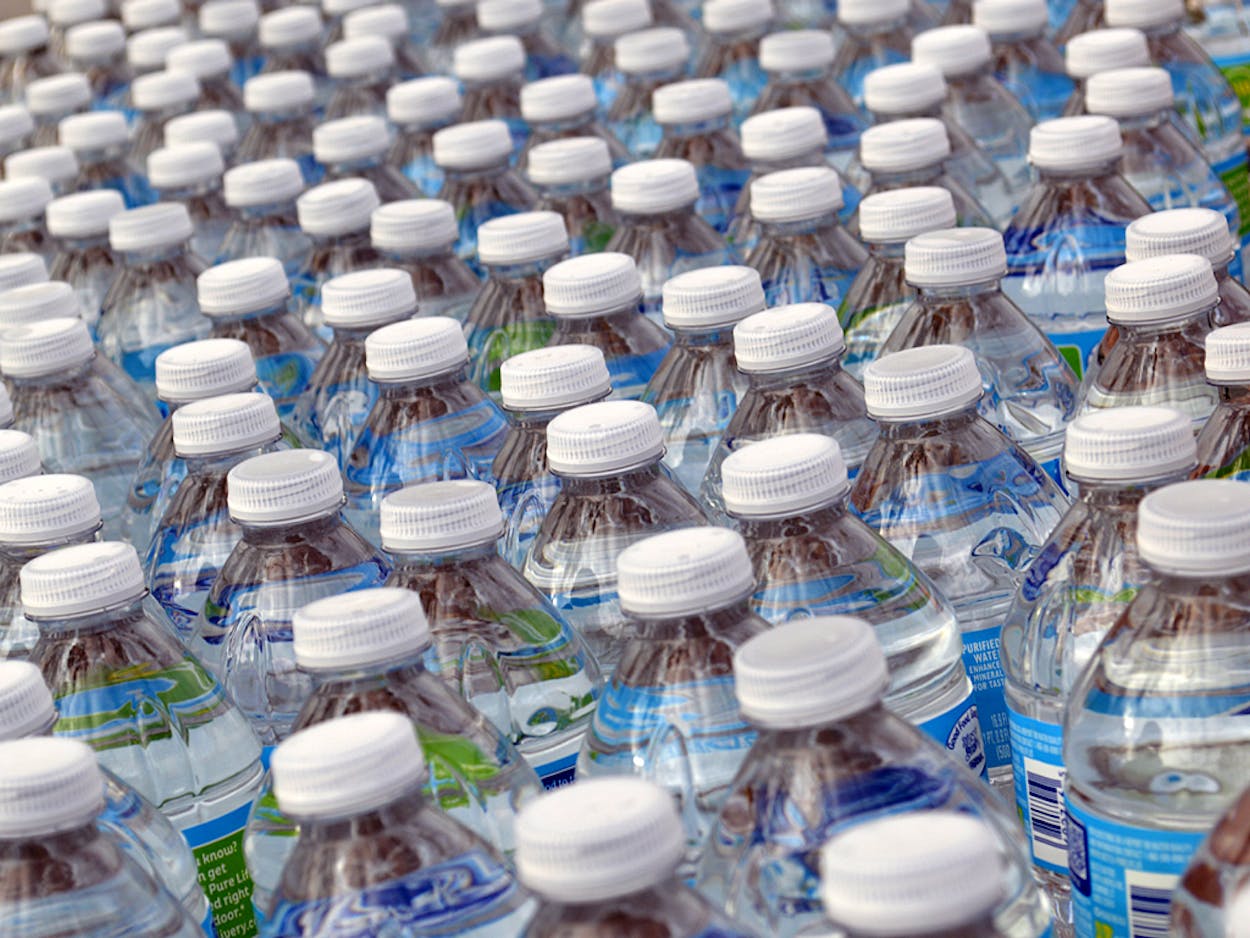As more details emerge about the Flint water crisis, it gets harder to understand how something like this could happen in the U.S. in 2016. The reports are horrifying: Not only are Flint’s residents left without access to clear drinking water, but there is speculation of lead poisoning in what could be thousands of children, self-governing rights are being taken away from citizens, and government officials seem to have been callously dismissive of research and concerns from health officials. How could this happen?
Unfortunately, Flint isn’t the only U.S. city without access to clean drinking water. In fact, the unincorporated community of Sandbranch, just southeast of Dallas, has been living without this first world staple for decades. In addition to its clean water issues, Sandbranch shares a few other commonalities with Flint. Flint is nearly 57 percent black with about 41 percent of its population under the poverty line compared to Michigan’s 14 percent and 17 percent, respectively. Sandbranch is predominantly black and the community has an average income of $721 a month. It’s not just a poor black community in Dallas County, it’s often been called the poorest.
In 1985, when D Magazine reported on the issue, the community of about 500 at the time was struggling to get access to clean water, sewer services, and trash services from the city of Dallas—services that it’s not allowed access to because it’s an unincorporated community. And today, in 2016, the community’s still asking for the same basics. In 1985, at least a few homes could rely on wells dug up by then-resident Albert Turner, but overtime, as gravel mining began near the community and residents had to come up with ways to manage their own waste, the wells soon became contaminated and unsafe.
Now, water from the few wells and tanks in the neighborhood is used for flushing toilets and sometimes cleaning (if it’s boiled). Water in tanks is covered in algae, and the well water comes through old pipes and hoses with sand in them. Unable to rely on the wells, residents now buy and bring water by the gallons from work, family, friends, and stores in surrounding areas such as Balch Springs, Oak Cliff, and Seagoville. They’ve had to resort to burning trash in their own backyards. This lack of access to basic services such as clean water and sewer services is especially frustrating considering that the Dallas Southside Wastewater Treatment Plant is just a few miles away from the community.
Over the years, families have moved out as conditions have only worsened without any aid from Dallas County. There have been attempts to bring water to the community, one of the most notable from County Commissioner John Wiley Price in 1985 to secure a Texas Community Development Program grant for Sandbranch. The grant would have given them access to $50,000 to $500,000 for a major project if Price’s plan went through:
The county, if it could land the TCDP funds, would build a water line extension from an existing city of Dallas water main to Sandbranch. The city would then supply water and bill the citizens as regular monthly customers. Price concluded by saying he would be appearing before the Dallas City Council the following Tuesday to ask the city to waive the policy regarding sale of water to unincorporated communities without sewage systems.
Unfortunately, city council refused to waive the policy and killed Price’s pitch. Other plans, including building a community well and annexing Sandbranch, also failed.
One of the many reasons the community of Sandbranch has been left without safe drinking water for so long is because it resides in the Trinity River floodplain. Water and sewer services would be too costly for Dallas to provide to dwindling community that might wash away. According to KERA, Dallas County moved 36 families out of the community about a decade ago, but the remaining residents have few options for relocating. Because the residents have so few resources, moving out of the community presents a unique challenge.
“How can they move when their income is $721 a month?” asks Eugene Keahey, the pastor of the Mount Zion Missionary Baptist Church in Sandbranch. “When they have no internet, how do you find an apartment, how do you find a home? How do you save up for the down payment of a new house?”
And if two poor, predominantly black communities without drinking water in the U.S. isn’t tragic enough, there’s another one with similar problems. St. Joseph, Louisiana—which is 77 percent black with 44 percent of its population living below the poverty line—has been under a “boil notice” since 2012. Residents say that’ve been dealing with tinted water for decades, but recently the water’s turned a dark, chalky brown. Somehow that water meets the Environmental Protection Agency’s standards. Interestingly enough, St. Joseph was allotted $6 million in 2013 to fix its water issues, but the funds have been frozen.
Flint isn't the only city with a water crisis. This majority black town in Louisiana has had brown water for years. https://t.co/TOelNFkt0w
— NowThis (@nowthisnews) January 29, 2016
Right now, St. Joseph is petitioning the White House to fix the water infrastructure while Flint residents hope they can rely on the recently administered water filters to protect them from even more led poisoning. In Sandbranch, residents are once again hopeful for change after visits from Texas Congresswoman Eddie Bernice Johnson and the U.S. Department of Agriculture’s Assistant Secretary of Civil Rights Dr. Joe Leonard. Still, it’s tragic to note how and why residents in these three communities went without clean drinking water for as long as they did. Perhaps it’s as Sallie Mae Smith, a long time resident of Sandbranch, explained to D Magazine in 1985: “We’re too weak, too poor and too black for folks to care.”
It’s 2016. It’s about time somebody proved her wrong.








